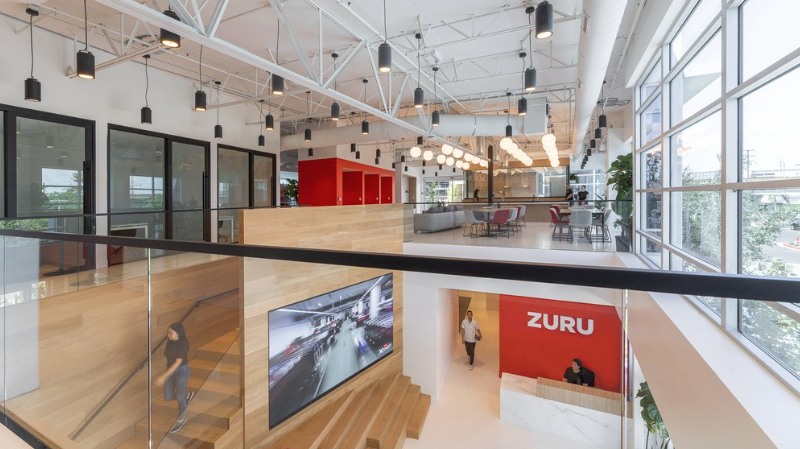Rebuilding L.A. After Wildfires: Leveraging Design-Build for Resilient Workplaces
The recent wildfires in Los Angeles have left a profound impact on communities, businesses, and the urban landscape. While much attention has been given to the loss of homes, it is crucial to acknowledge the significant damage sustained by businesses and office spaces here in Southern California. As the city embarks on the challenging journey of rebuilding, the opportunity to create resilient, sustainable, and human-centric workplaces emerges.
Josh Edelson - Getty Images
Current L.A. Construction Figures
Rebuilding in Los Angeles faces increased costs and extended timelines due to high demand for construction services, labor shortages, and rising material prices.
Costs: Office construction costs typically exceed residential, with commercial projects averaging $300-$450+ per square foot depending on complexity.
Materials: Prices are rising due to high demand and potential tariffs, with steel and other key materials significantly affected.
Lead Times: Delays are common due to permitting backlogs, a competitive market for skilled labor, and material shortages, despite efforts to expedite processes.
These challenges underscore the need for efficient methods like design-build to mitigate delays and manage costs effectively.
Key Strategies for Workplace Reconstruction
1. Resilient Design
Integrating fire-resistant materials, energy-efficient systems, and adaptive layouts is essential. Workplaces must be designed to withstand environmental challenges while maintaining functionality. Features like sprinkler systems, fire-rated walls, and green roofs can enhance safety and sustainability.
2. Employee-Centric Spaces
Post-wildfire workplaces should prioritize employee well-being. Incorporating natural light, biophilic elements, and quiet zones can help reduce stress and improve productivity. Flexible workstations and collaborative spaces support diverse work styles and foster a sense of community.
3. Sustainable Practices
Reconstruction efforts present an opportunity to adopt sustainable practices. Using reclaimed materials, installing solar panels, and optimizing HVAC systems align with environmental goals and reduce operational costs. Sustainable workplaces also demonstrate corporate responsibility, appealing to eco-conscious clients and employees.
4. Technology Integration
Smart building technologies enhance safety and efficiency. Sensors for air quality monitoring, automated emergency systems, and virtual collaboration tools ensure a modern, responsive workplace.
Rebuilding resilient workplaces extends beyond physical infrastructure. Benefits include:
Economic Growth: Restoring business operations stimulates local economies, creating jobs and attracting investment.
Community Reconnection: Thoughtfully designed workplaces foster collaboration and provide spaces for communal healing.
Disaster Preparedness: Resilient designs reduce future recovery costs and downtime.
Design-build offers a streamlined approach to reconstruction, combining design and construction under a single contract. This method accelerates project timelines, reduces costs, and ensures cohesive project execution—critical benefits in post-disaster scenarios. For workplace interiors, this means:
Efficiency: Faster project delivery ensures businesses can return to normalcy quickly.
Customization: Tailored solutions address specific needs, such as flexible layouts, hybrid work accommodations, and wellness-focused designs.
Collaboration: A unified team fosters better communication, reducing errors and ensuring the final product aligns with the vision.
Worksmart’s integrated design-build approach positions us as a trusted partner in workplace recovery. Our expertise in workplace interiors ensures environments that are:
Adaptable to future challenges.
Centered on employee experience.
Aligned with sustainability goals.
We collaborate closely with clients to deliver tailored solutions that balance aesthetics, functionality, and resilience.
Rebuilding Los Angeles after the wildfires is an opportunity to rethink how workplaces are designed and experienced. By leveraging design-build methodologies, businesses can create spaces that not only recover but thrive. Resilient, sustainable, and employee-focused workplaces will be at the heart of Los Angeles’s resurgence, paving the way for a stronger and more unified community.



